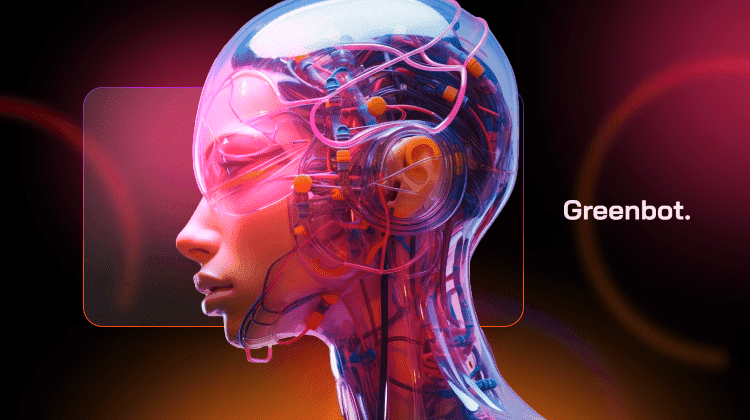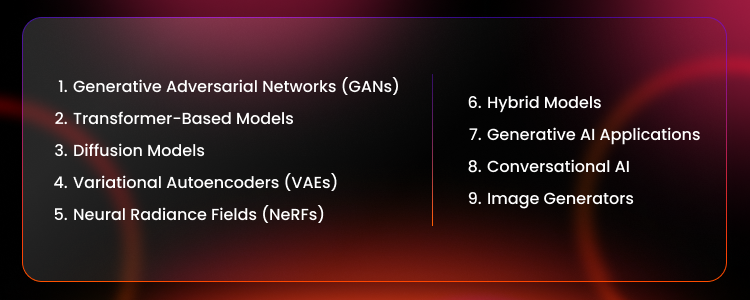
So, what is Generative AI capable of? Depending on its training, it can produce outputs like text, images, videos, simulations, code, or audio. This technology drives creativity and innovation by automating high-quality content creation across industries.
Understanding Generative Artificial Intelligence
Generative AI creates new content. Traditional systems, however, analyze data to predict outcomes.
A Journal of Machine Learning Research study shows generative AI can enhance creativity across artists in many fields. Another study from the National Academy of Sciences highlights its success in creating realistic visuals.
One area of significant impact has been the creation of highly realistic and intricate images, including sensitive topics like AI Generated Nudes. These applications raise questions about ethical considerations, artistic freedom, and privacy, showcasing both the potential and challenges of generative AI.
Generative AI’s Evolution
Generative AI has evolved rapidly in the last decade, driven by deep learning and neural networks. Early models focused on generating realistic images for simple tasks. However, tools like Generative Adversarial Networks (GANs) have led to more advanced, realistic content representation.
GANs, introduced in 2014, were a breakthrough. They use two neural networks: the generator and the discriminator. The generator creates new data samples, such as images or videos, to mimic real data. Meanwhile, the discriminator evaluates these samples, distinguishing between real and generated data.
Both networks compete, with the generator improving its output over time to “fool” the discriminator, leading to the production of higher-quality, realistic content. This adversarial process helps GANs achieve remarkable results in generating images, videos, and more. in competition to help produce high-quality photos and videos.
Large language models like GPT have recently shown impressive results in generating natural text. As generative AI grows, its uses expand into art, music, healthcare, engineering, and business.
AI Technologies that Power Generative AI
Generative AI depends on a combination of technologies working together to create outputs. These technologies include data processing, machine learning models, infrastructure, and feedback systems, which ensure the efficient operation of AI models.
Here’s an overview of the critical tech layers that power deep generative models in AI, from data management to deployment.
Data Processing Layer
This layer transforms and cleans raw data, making it ready for analysis. Proper data processing ensures AI models use reliable information.
Generative Model Layer
The core of generative AI is built on the infrastructure layer. It uses machine learning to find patterns and generate outputs with little human labeling.
Feedback and Improvement Layer
This layer refines models through iterative feedback. It improves their accuracy and relevance over time.
Deployment and Integration Layer
This layer lets users deploy and use generative AI models across platforms. It also enables integration into workflows for efficient real-world use.
Application Layer
The application layer handles system communication. It allows AI models to interact with users and other systems.
Data Platform and API Management Layer
This layer stores and analyzes data. The API standardizes interactions between applications and data systems.
Orchestration Layer
The orchestration layer manages data transformation, image generation, and system integration tasks, ensuring smooth AI operations.
Model Layer and Hub
The model layer handles data as inputs and generates output. The hub ensures communication between models.
Infrastructure Layer
This layer provides the resources and data centers for generative AI. It is used for training, deploying, and maintaining AI models.
9 Main Types of Generative AI Models

Generative AI models vary in how they generate content, from images to text. Below are the nine main types, with examples showing their real-world applications.
Generative Adversarial Networks (GANs)
GANs consist of two neural networks that compete to improve content generation. Popular applications like ChatGPT and DALL-E utilize GANs to create human-like text and images.
Transformer-Based Models
Transformer-based models like GPT-3 and Bard (2020) are known for their ability to understand and generate text. They revolutionize language processing tasks in areas like chatbots and automated writing.
Diffusion Models
Diffusion models generate high-quality images by gradually removing noise from data. OpenAI’s DALL-E 2 uses this technique to produce detailed images from text descriptions.
Variational Autoencoders (VAEs)
VAEs, introduced in 2013, are used to create new variations of input data. They have been applied in tools like DeepMind’s AlphaFold, aiding in protein folding predictions and drug discovery.
Neural Radiance Fields (NeRFs)
NeRFs, launched in 2020, create 3D scenes from 2D images. They are commonly used in virtual reality applications and game design.
Hybrid Models
Hybrid models combine features from multiple AI techniques to improve content generation capabilities. NVIDIA’s GauGAN uses hybrid approaches to create photorealistic landscape images from sketches.
Generative AI Applications
Generative AI is changing industries by stimulating conversations and generating images. ChatGPT powers chatbots and virtual assistants, boosting customer service and automating tasks.
Tools like DALL-E and Midjourney create visuals from text. In science, generative AI helps find new protein sequences and advance drug development. It is also used to personalize medicine.
Conversational AI
Conversational AI uses machine learning and natural language processing to enable human-like interactions. It powers customer support chatbots and virtual assistants.
Image Generators
AI image generators create visuals from text descriptions to speed up content production.
Use Cases of Generative AI in Different Industries

Generative AI is popular in these industries:
Healthcare and Pharmaceuticals
Generative AI is speeding up drug discovery processes. In 2023, the first AI-made drug entered Phase II trials—a major step for the industry. AI also creates fake patient data for testing treatments, reducing the need for real-world trials. In personalized medicine, AI offers tailored healthcare suggestions based on genetic profiles.
Entertainment and Content
Creation Generative AI is changing entertainment. DALL-E and ChatGPT automate scriptwriting, video editing, translation, and music production. AI models now generate plot ideas or edit videos faster. In 2022, AI-powered music tools created full soundtracks, transforming the creative process.
Business and Marketing
Generative AI is now a key part of millions of business and marketing strategies. A recent study shows that 92% of companies used AI to improve customer engagement with personalized marketing.
AI tools analyze consumer behavior and create tailored ad copy or product descriptions. Businesses use AI in customer support. It blends automation with personalization to improve brand interactions.
Conversational AI Applications
ChatGPT and Bard, for example, improve chatbots and productivity. They also enable more natural interactions.
In customer service, AI voice assistants have become essential. They address problems and answer queries autonomously.
About 80% of businesses use chatbots for customer service, and the number continues to rise. They cut costs and boost customer satisfaction with instant, tailored replies.
NSFW AI Applications
Generative AI also finds its place in adult entertainment and content creation through NSFW (Not Safe For Work) apps. These AI-driven platforms allow users to enjoy intimate experiences with virtual characters. They can create adult-themed content like deepfake nudes, role-play, or sext chat.
Some advanced NSFW apps allow users to create their Al girlfriend or companions. They can personalize everything about them, from their hair color and race to personality and kinks. The AI engine behind these apps learns the user’s sexual preferences and tastes on a rolling basis.
Top NSFW AI apps like Candy.AI, Dream GF, and SoulFun are safe, secure, and legal. They help users create nude art and enjoy personalized chats customized to their kinks, fantasies, and desires. Some are geared towards anime characters, while others provide video and voice chatting.
Aside from virtual girlfriend AI apps and sites, NSFW AI platforms can offer numerous other use cases for generative artificial intelligence. The best AI sexting apps & sites, for example, virtual romantic chatting to the next level. Some focus on virtual love fantasies, while others provide personalized relationship advice.
Advantages and Disadvantages of Combining AI Technologies
Advantages
- Boosts innovation and efficiency
- Enhances creativity in content generation
- Improves decision-making with data-driven insights
Disadvantages
- Complex system management and integration
- Potential ethical issues like bias
- Balancing innovation with data privacy concerns
Best Practices for Using Generative AI
Data Privacy Considerations
Protecting sensitive data is vital when using Generative AI, especially in healthcare and finance. Users are always advised to encrypt and anonymize data and follow HIPAA and GDPR. Using synthetic data for training helps reduce risks without affecting AI performance.
Bias Mitigation in AI Outputs
Bias in AI models can cause unfair outcomes. Training models on diverse datasets helps prevent this. It is crucial to regularly check outputs for bias and adjust algorithms or training data as needed. Transparency in decision-making and ethical oversight ensure fairness in generative AI.
Ensuring Ethical Use
Ethical guidelines are crucial to prevent the misuse of generative AI. Boundaries should be set to avoid generating harmful content like deepfakes or misinformation. Ethical AI deployment requires accurate content, copyright respect, and transparency in AI use.
Model Evaluation and Continuous Improvement
Ongoing evaluation of generative AI models is crucial for maintaining effectiveness. Tracking metrics like accuracy, relevance, and user satisfaction helps identify areas for improvement. Regular updates to datasets ensure the model stays accurate and adapts to changing needs.
Regulations Governing Generative AI
As Generative AI grows, most regions create regulations to address its impact.
The U.S. lacks a comprehensive AI framework. However, talks are ongoing on new laws to ensure ethical use. The White & Case AI Watch provides insights into these emerging regulations.
In Europe, the EU’s AI Act ensures AI systems are safe and respect rights, with stricter rules for high-risk applications. Globally, countries and organizations are recognizing the need for AI regulations.
Ethical and Social Impacts of Generative AI
Generative AI has a major societal impact. It improves creativity, automates tasks, and personalizes experiences. However, it raises ethical concerns such as misinformation and bias, which can harm vulnerable communities.
Generative AI vs. Predictive AI vs. Conversational AI
Generative AI creates text, images, or videos based on learned patterns. Models like GPT-3 and DALL-E are used in creative sectors, chatbots, and drug discovery.
Predictive AI forecasts future trends from historical data. It’s used in finance, healthcare, and retail to predict outcomes like stock prices or disease progression.
Conversational AI enables human-like interactions with machines. Models like ChatGPT and Bard power virtual assistants and chatbots, enabling smoother communication.
Future of Generative AI & Large Language Models
Generative AI and large language models are set to bring exciting advancements. As they evolve, industries like healthcare could use them for personalized treatments.
Multimodal AI will let models work with text, images, and audio, easing tasks and improving user experiences.
Generative AI vs Traditional AI
Generative AI differs from traditional AI in crucial ways. Traditional AI focuses on tasks like classification and prediction using historical data. Generative AI creates new content, mimicking human creativity with novel outputs.
Definition and Purpose
Generative AI aims to produce new data that mirrors existing patterns. Traditional AI, on the other hand, seeks to analyze data for decision-making. This shift in purpose opens new avenues for innovation and creativity in various fields.
Methodologies
Generative AI often employs deep learning techniques, such as Generative Adversarial Networks (GANs) and Variational Autoencoders (VAEs). In contrast, traditional AI relies on algorithms focusing on statistical analysis. Think of decision trees or linear regression, which emphasize prediction and classification tasks.
Applications
Traditional AI is widely used in fraud detection, recommendation systems, and predictive maintenance. Generative AI transforms content creation, art, and drug discovery.
Outputs and Quality
Generative AI can create high-quality text, images, and videos. However, it often needs extensive validation. Traditional AI produces outputs for specific decision-making tasks. It focuses on accuracy and reliability rather than creativity.
Limitations
Generative AI has several challenges. They include managing bias and ensuring ethical use of its content. Traditional AI also has drawbacks. Since it relies on historical data, it can lead to outdated knowledge or biased predictions.
FAQs on Generative Models
What Is Generative AI in Simple Terms?
Generative AI is a type of AI that creates new content like text, images, music, or videos by learning from existing data. It mimics human creativity and is useful in writing, art, and entertainment.
What Are Generative AI Models?
Generative AI models are advanced algorithms that produce new content by analyzing patterns in data. Models like GPT-3 and DALL-E use deep learning to create realistic text, images, music, or videos.
What Is Generative AI vs. Artificial Intelligence?
Generative AI is a part of AI that focuses on creating new content from learned data. AI, in general, includes technologies like machine learning and robotics.
Is ChatGPT Generative AI?
Yes, ChatGPT is generative AI. It uses deep learning to generate human-like responses to text based on user prompts.
What Is an Example of a Generative AI Model?
DALL-E, developed by OpenAI, is an example. It creates images from text descriptions using deep learning.
What Are the Limitations of Generative AI?
Generative AI struggles with understanding context. Researchers and developers say it can result in irrelevant outputs. It can also reflect biases from the data it was trained on, sometimes producing biased or offensive content.
What Is the Relationship Between Generative AI and NSFW Content?
The relationship between generative AI and NSFW (Not Safe for Work) content is complex and multifaceted. Generative AI models have the potential to create a wide range of content, including explicit material, which raises significant ethical and legal concerns.
For instance, NSFW chat models can generate realistic images, videos, and text that may be sexually explicit or inappropriate, leading to debates around consent, copyright, and the potential for misuse.
Conclusion about Generative AI Models
Generative AI tools perform multiple tasks. They transform industries like gaming, medical imaging, and drug discovery. Enterprises also use AI systems to analyze data, call customers, and improve business processes.
However, fine-tuning is needed when using proprietary or unlabeled data. Ethical concerns, like bias, remain a challenge. New models, including diffusion models, will improve accuracy and creativity. This will ensure generative AI continues to push the boundaries of innovation.






















